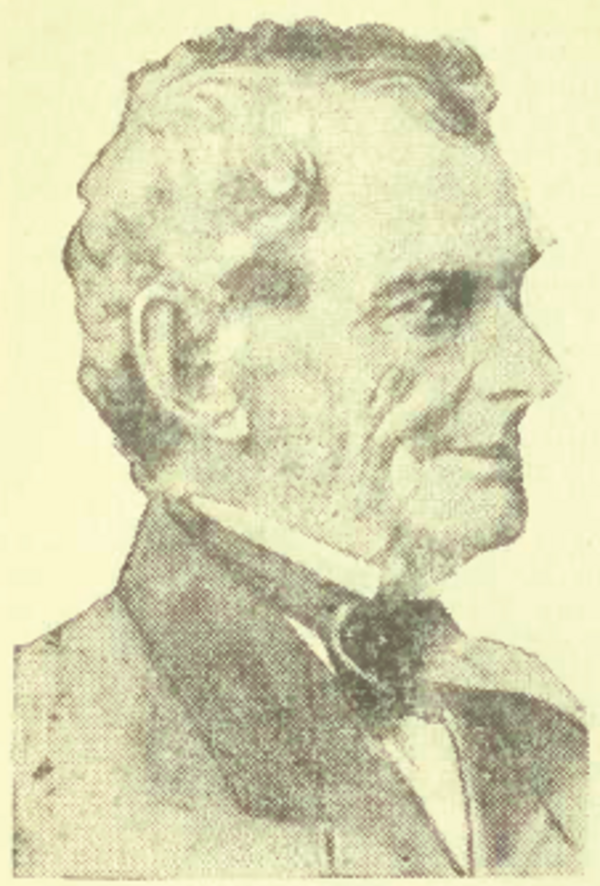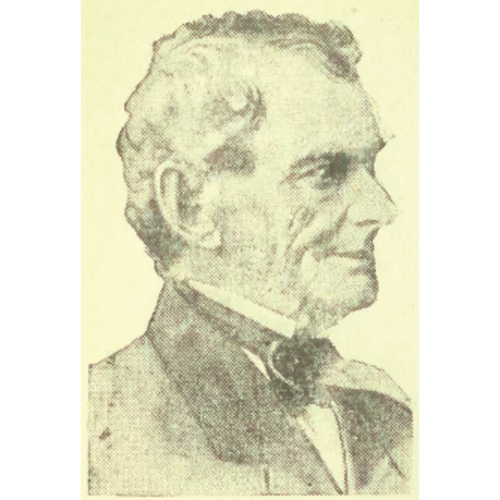
Source: Courtesy of Wikimedia Commons
MONRO (Munro, Munroe), GEORGE, merchant and politician; b. in Scotland in 1801; m. about 1822 Christine Fisher of Montreal, and was survived by two sons and four daughters; d. 5 Jan. 1878 in Toronto, Ont.
George Monro came to Niagara, Upper Canada, as a child with his parents. He left for York (Toronto) in 1814 with his elder brother John and together they entered the retail grocery business. They separated in 1824, and George continued on his own to develop a successful wholesale enterprise, advertising himself as “Importer of British and India Goods.” He also began to take part in the political life of the town.
Throughout his public career Monro was a weak pillar of the Toronto establishment. He attended the Church of England cathedral, St James’, was a member of the Church Society and the Bible Society, was a director of the Home District Savings Bank and the British America Assurance Company, and in 1833 was appointed a magistrate. From 1834 to 1845 (except for 1836) he was elected to the city council from the St Lawrence ward. In 1841 he was chosen mayor, after the nomination of George Gurnett* had been successfully challenged on the grounds that he sublet a house for use as a brothel.
Daring his mayoralty Monro was the “Conservative and Constitutional Candidate” for Toronto’s two-seat riding in the Legislative Assembly. He repudiated responsible government as “anti-British and unreasonable,” and thought Toronto should have the “carrying trade of the St. Lawrence.” When the poll closed after six days, Monro was last, and the other Conservative, Henry Sherwood*, second last; the two Reformers, John Henry Dunn* and Isaac Buchanan*, had to their surprise won.
Among those disappointed by this result was a man named Allen, who recruited some fellow-Orangemen to demonstrate against the Reformers’ triumphal parade on Monday, 21 March 1841. The Orangemen gathered at the North of Ireland Coleraine Tavern; about noon they sallied forth to beat up a kilted piper on his way to join the parade and dismembered his instrument. On being told of the assault and asked to provide protection for the parade, Monro replied “You may go to the Devil.” The mayor and magistrates had not been unaware that trouble was brewing: at a meeting earlier that morning Monro had suggested calling out the military, but the magistrates preferred to swear in special constables – mostly the same men who had been notoriously partisan during the election of the week before. These constables do not appear to have gone far from the city hall, for it was realized that they were more likely to provoke trouble than to reduce it.
The parade started, but when it reached St James’ Cathedral it was pelted with muck and stones and horses were clubbed. The attackers were beaten off and the parade continued. When the carriages bearing the successful candidates passed in front of the Coleraine inn, shots were fired from within and one bystander was killed and others wounded. Alderman John Powell arrived on the scene and read the riot act and Dunn sent two men to the Osgoode Hall barracks for military help. A request from the mayor was needed, so the men had to find Monro (who had mounted a feckless horse in order, he said, to get military help himself) and pressure him into going with them to the barracks and admitting that he was indeed the mayor. The troops then restored order: The provincial government ordered a commission of inquiry headed by William Foster Coffin, which concluded that the “indecision and remissness evinced by the magistrates . . . amounts . . . to little less than connivance, if not to an actual collusion with the rioters . . . . [The Mayor] is amenable to a charge of dereliction of duty.”
Monro petitioned for a committee to investigate the truth of the commission’s report, but failed to get a hearing. He completed his year in office and, so little was his reputation apparently sullied by the events of the riot, was sent to England as the bearer of an address to Queen Victoria on the birth of the Prince of Wales. In 1844 Monro stood again as a Conservative candidate, this time in the east riding of York, where he was defeated by James Small*. Monro’s supporters then claimed that Small’s qualifications were defective, and the assembly found that Monro “was duly elected and ought to have been returned.” He ran again in the general election of January 1848 in the same riding, but fell an easy victim to the Reformer, William Hume Blake*, who was in Europe at the time.
This defeat ended Monro’s peppery political career, and he lived quietly thereafter. He gave up his business around 1856 and moved to the fashionable new district around the foot of Spadina, where he practised his life-long hobby of gardening. He sat amid his flowers listening to his gardener play the pipes and slowly passing, as the Mail said on his death, “beyond the recollection of the present generation.”
Canada, Province of, Legislative Assembly, Journals, 1841, app.S, “Report of the commissioners appointed to investigate certain proceedings at Toronto connected with the election in that city . . . .” Examiner (Toronto), 1841. Toronto Patriot, 1841. City of Toronto poll book: exhibiting a classified list of voters, at the late great contest for responsible government . . . (Toronto, 1841). Landmarks of Toronto (Robertson), I. Town of York, 1815–34 (Firth). York commercial directory, street guide, and register, 1833–4 . . . , comp. George Walter (York, [1833]). Toronto city directory for 1872–73 . . . , ed. and comp. W. H. Irwin (Toronto, 1872).
Cite This Article
R. I. K. Davidson, “MONRO (Munro, Munroe), GEORGE (1801-78),” in Dictionary of Canadian Biography, vol. 10, University of Toronto/Université Laval, 2003–, accessed December 31, 2025, https://www.biographi.ca/en/bio/monro_george_10E.html.
The citation above shows the format for footnotes and endnotes according to the Chicago manual of style (16th edition). Information to be used in other citation formats:
| Permalink: | https://www.biographi.ca/en/bio/monro_george_10E.html |
| Author of Article: | R. I. K. Davidson |
| Title of Article: | MONRO (Munro, Munroe), GEORGE (1801-78) |
| Publication Name: | Dictionary of Canadian Biography, vol. 10 |
| Publisher: | University of Toronto/Université Laval |
| Year of publication: | 1972 |
| Year of revision: | 1972 |
| Access Date: | December 31, 2025 |



